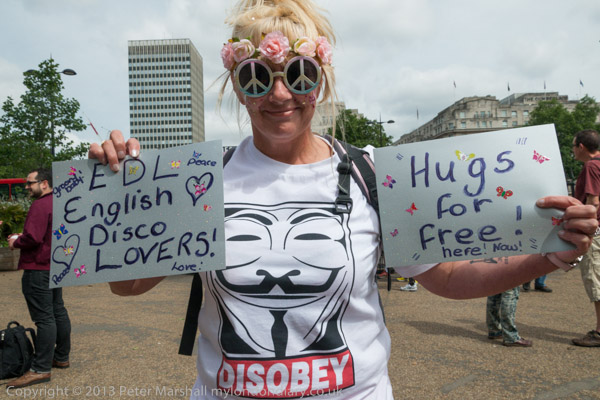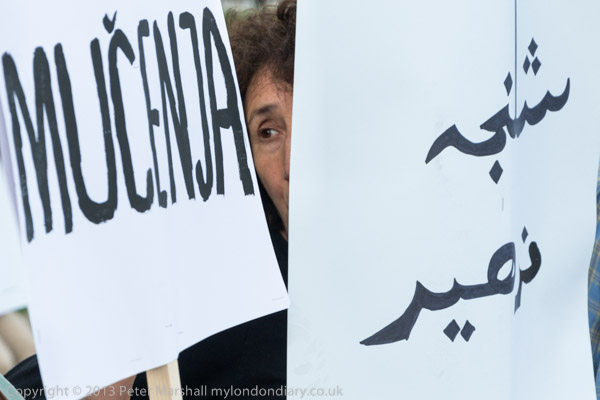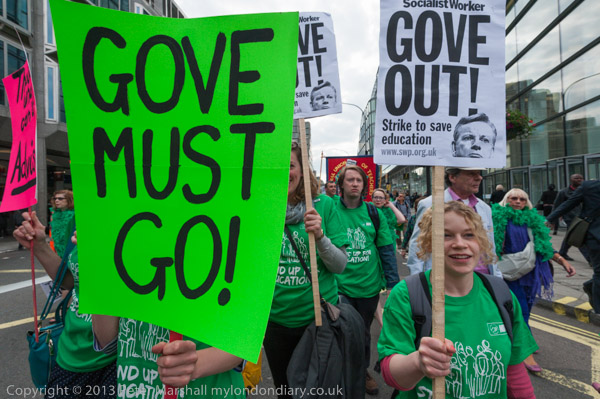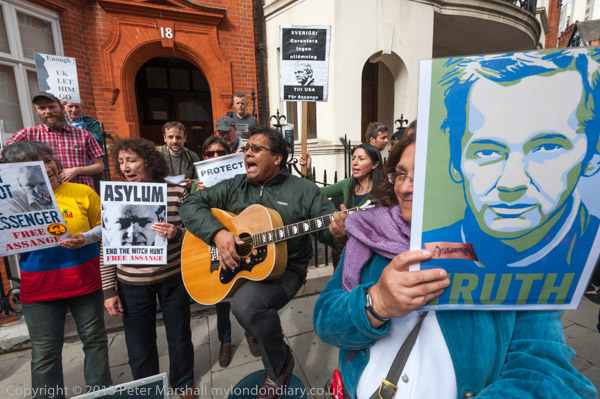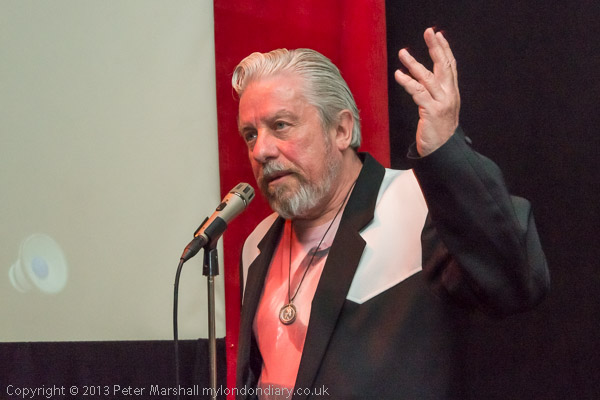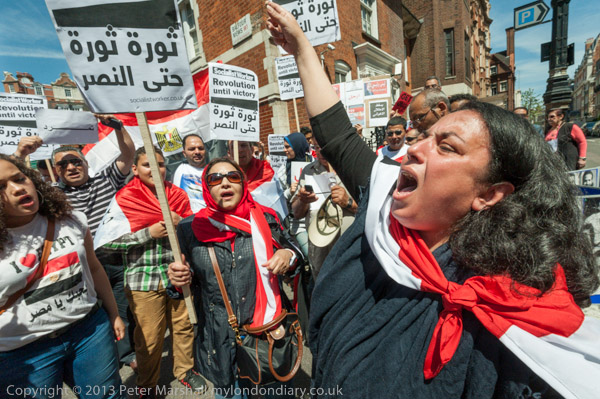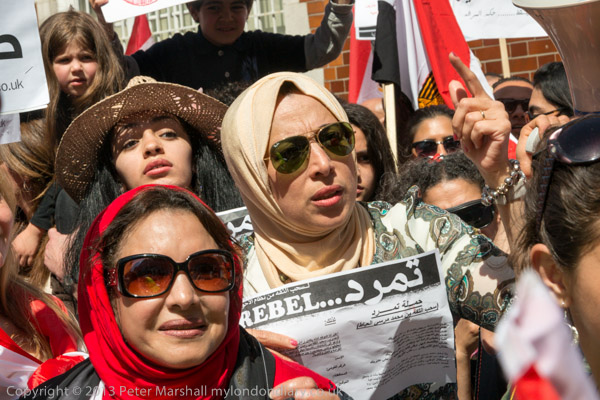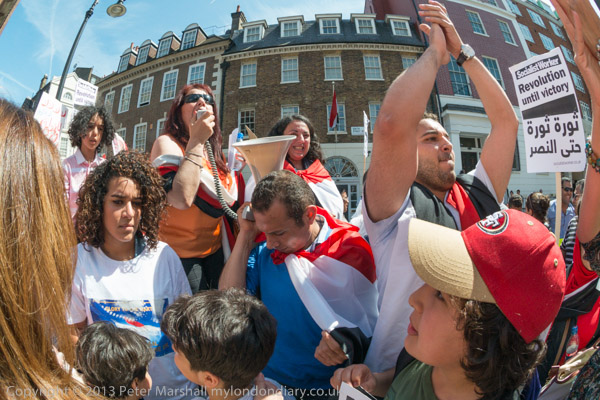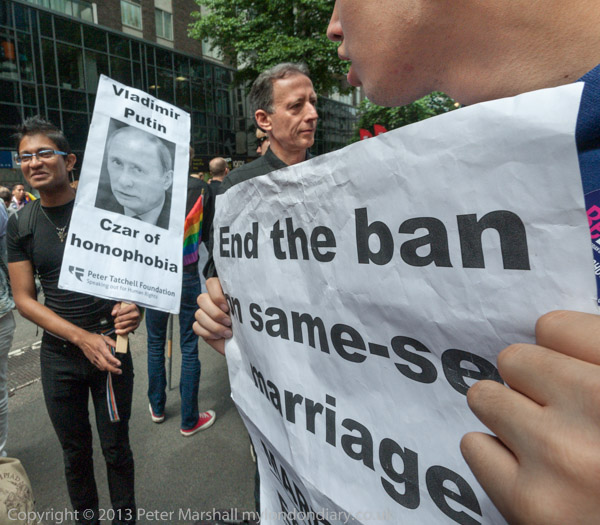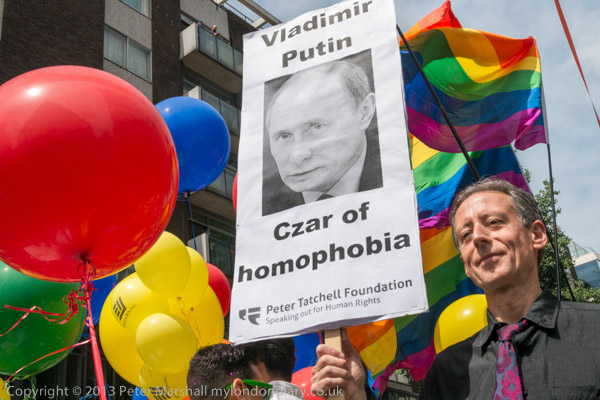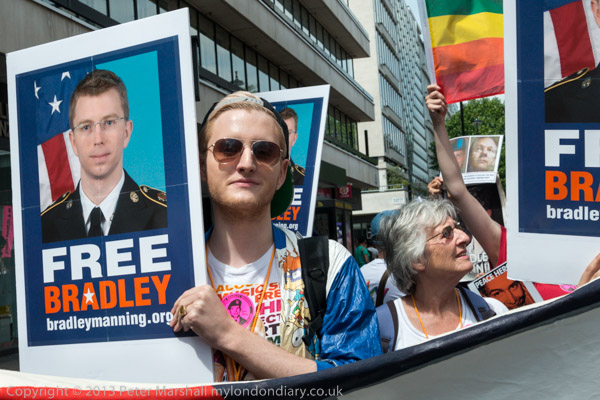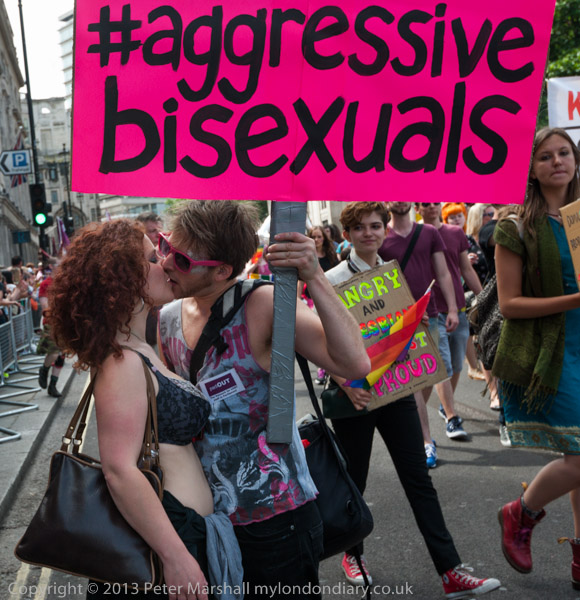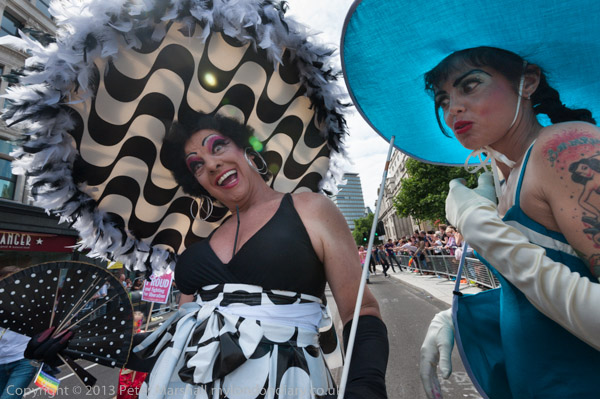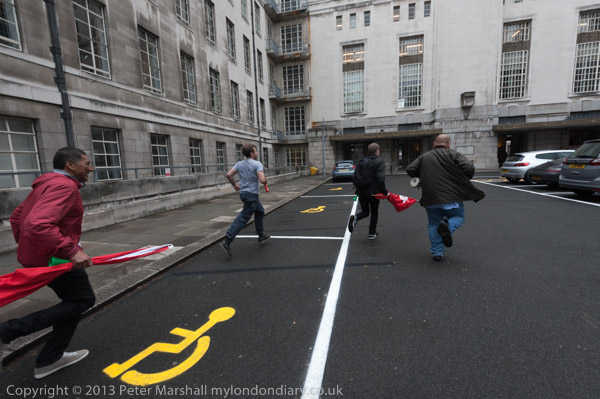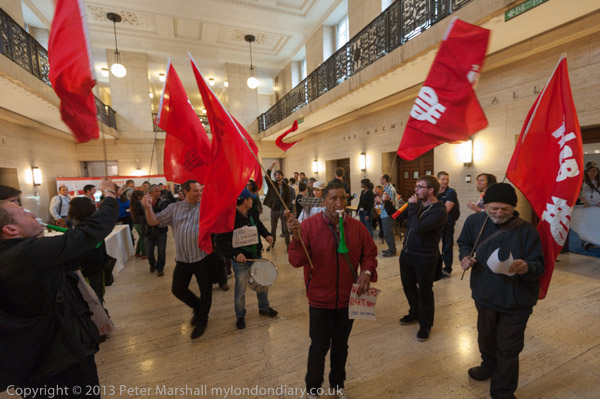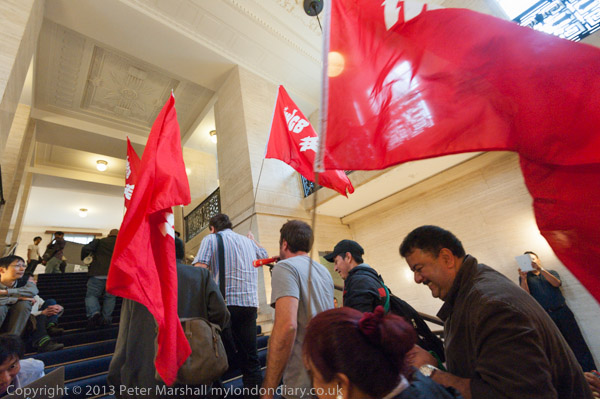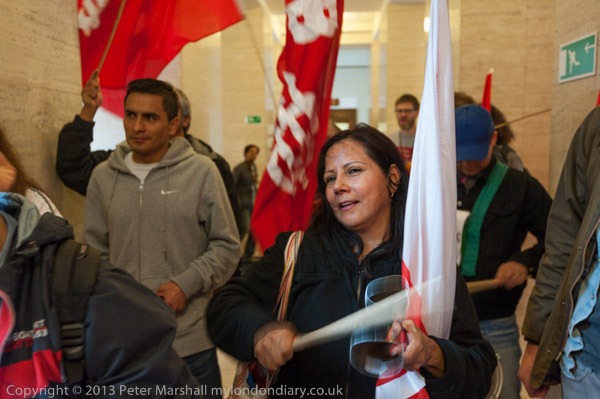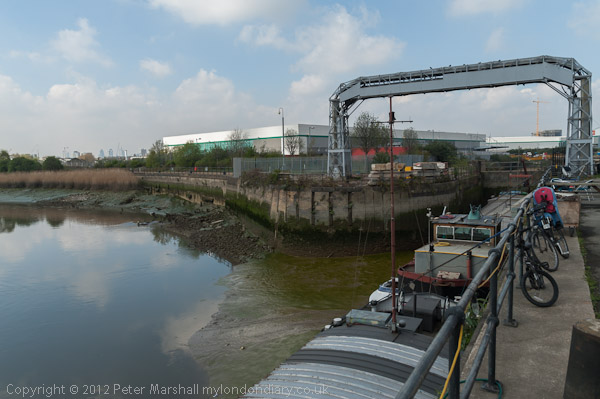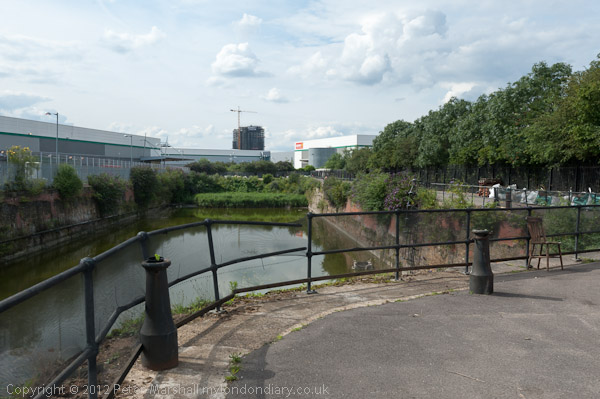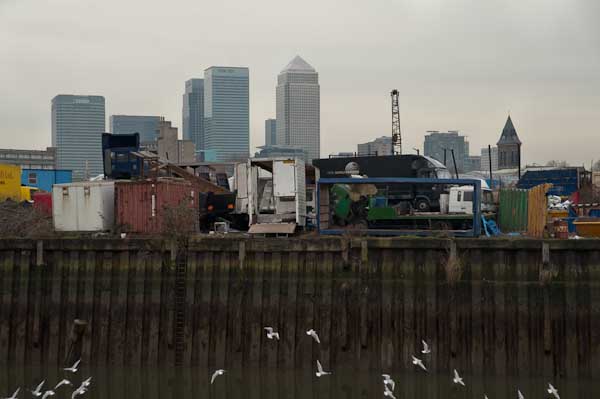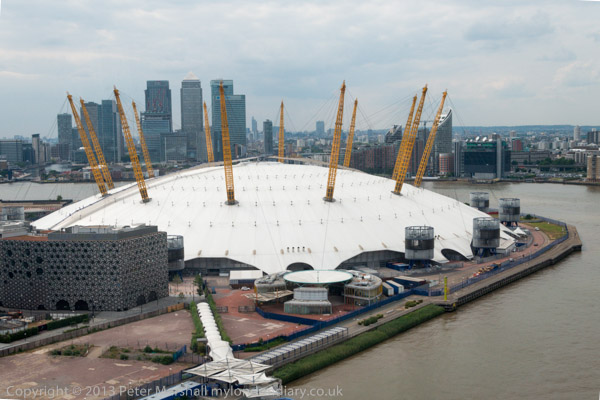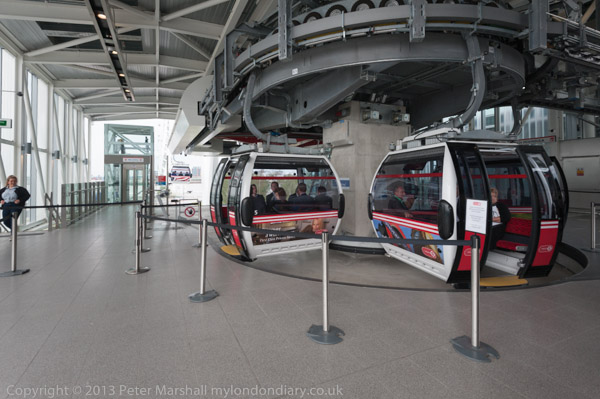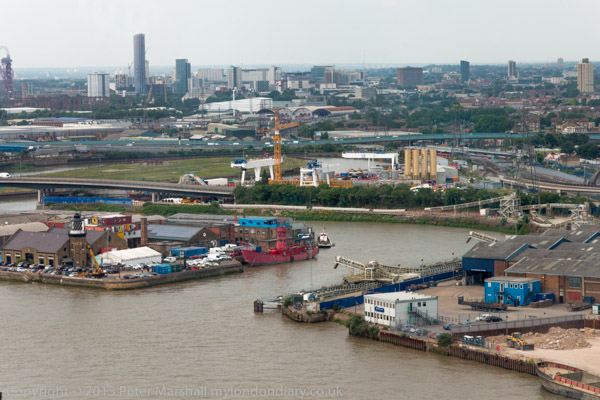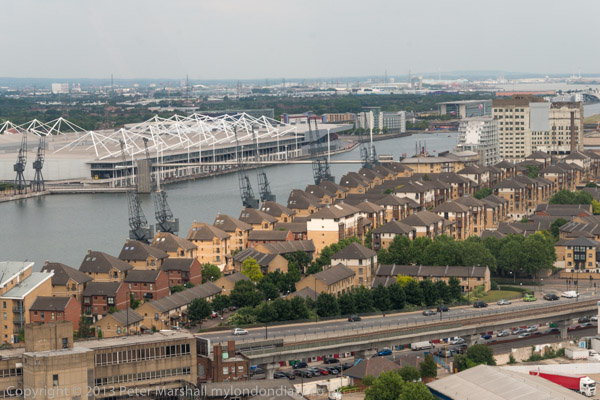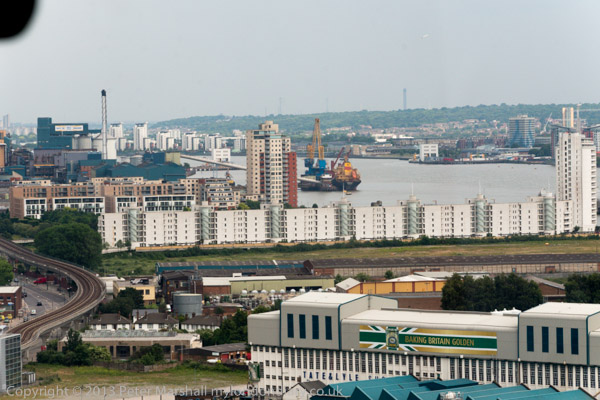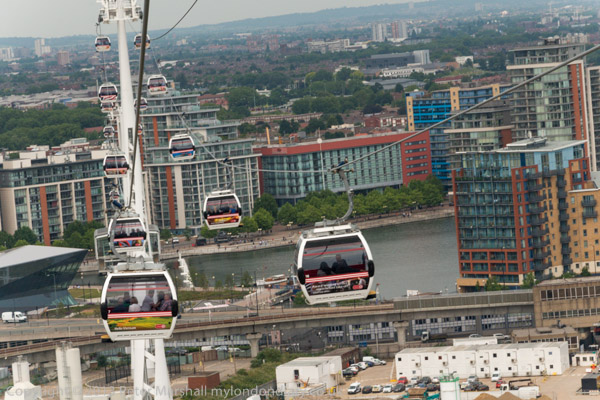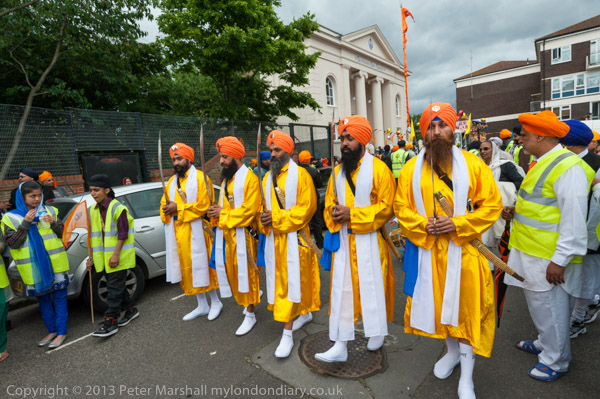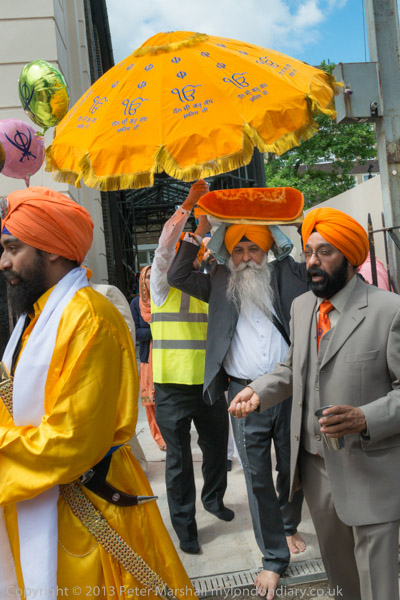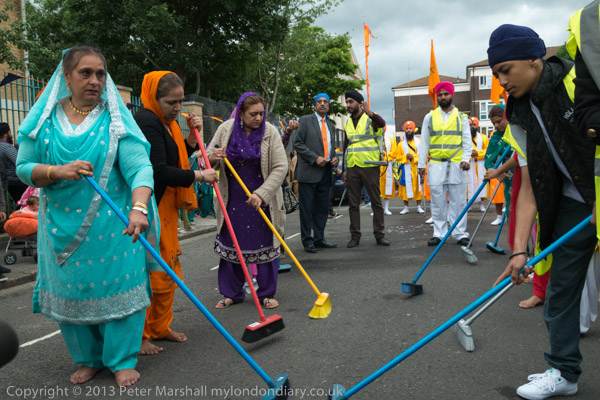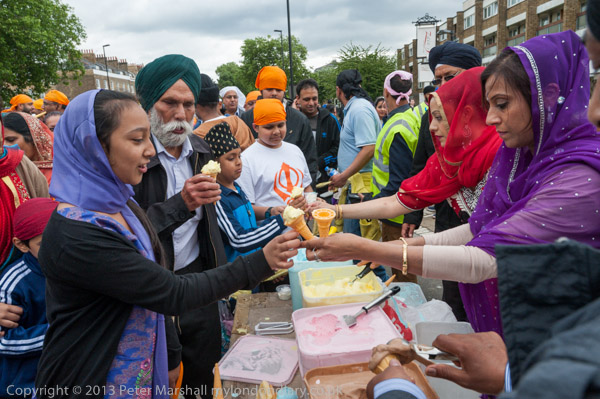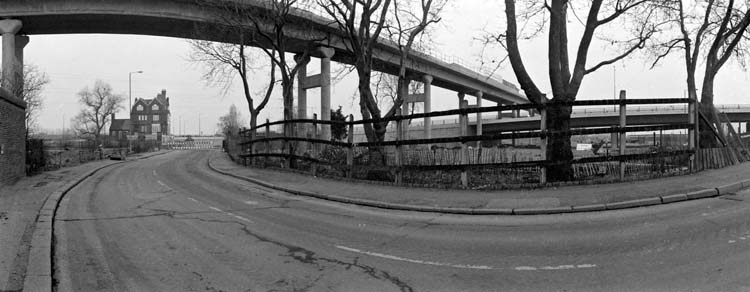
DLR at Connaught Crossing, Royal Docks 1992
I’ve worked with panoramic images for a long time, making my first using multiple film exposures around 30 years ago, but my real involvement with them began in November 1991 when I spent almost a month’s salary from my full-time teaching job on a Japanese swing-lens camera, a Japanese Widelux F8, then the latest and last in a series of similar cameras made by Panon – the F8 has nothing to do with aperture, they started with F1, then came FV (presumably a Roman version!), F6, F7 and in 1988 the F8 that I still own, though I’m not sure whether it still works.
It was a simple camera. Fixed focus, three shutter speeds – 1/15, 1/125, 1/250th – a 26mm f2.8 lens that stopped down to f11, and a clockwork motor that rotated the lens around its centre in front of a curved film path to produce a negative a little over one and a half times longer than normal for 35mm film (59x24mm) with a horizontal angle of view of 130 degrees. It also had a viewfinder that didn’t show you most of the view, and, more importantly, two large arrows on the top of the body which gave a pretty good indication of the limits of the image.
I first used it to take pictures of the Lord Mayor’s show, where I found out several important things about it, not least that it was all too easy to include at least one of your fingers in the picture. But I loved its ability to record things hand-held across a wide sweep, even including people and movement, something that wasn’t really possible with multiple image panoramas. Later I preferred other similar cameras, in particular the Russian Horizon 202, a rather clunkier camera, with a large plastic body hiding cruder mechanics but with a far better viewfinder including a handy bubble level and a wider range of shutter speeds but a slightly less wide view. I’d recommend its successor, the Horizon S3 Pro (or Perkeft) to anyone who wants to work simply with panoramas and is prepared to use negative film (colour or b/w) to do so. Still a great bargain even if you don’t buy yours – as I did my last 202 – shipped as a gift in a brown-paper parcel sent from a rather suspect private address in the Ukraine.
But the real forte for panoramas – at least for me – is urban landscape, and you can see some examples in ‘Thamesgate Panoramas‘ and on the Urban Landscapes site – as well as in Estuary.
I’d chosen the Widelux F8 for several reasons, some practical others aesthetic, relying very much on a few pages in a book on the subject with provided descriptions and details of the whole range of panoramic cameras available new or commonly on the second-hand market, but, most importantly, a series of images made with them from the same place. I’d already decided I wasn’t interested in making 360 degree images such as those of Kenneth Snelson – I bought a copy of his 1990 book ‘Full Circle’, and though I admired the work it seemed too contrived for me, nor could I afford the approach of another of my panoramic heroes Art Sinsabaugh, slaving away with a 20×12″ banquet camera, cropping the results from the 24″ lens down to perhaps 20×5″ or even 20×1″. I wanted a camera I could carry easily, could afford to use and would make images that took in something like the whole width of my own vision from a single viewpoint – and the the Widelux was more or less a perfect match.
But now everything can enjoy the many advantages of digital, but the market for panoramic cameras isn’t enough to produce digital versions at sensible prices. Instead most cheaper digital models come with a panoramic mode, where the camera ‘stitches’ together a series of images as you swing it around. They kind of work, but I’ve yet to find a camera that will consistently even and seamless results. They can produce some fun images, but don’t see capable of serious results.
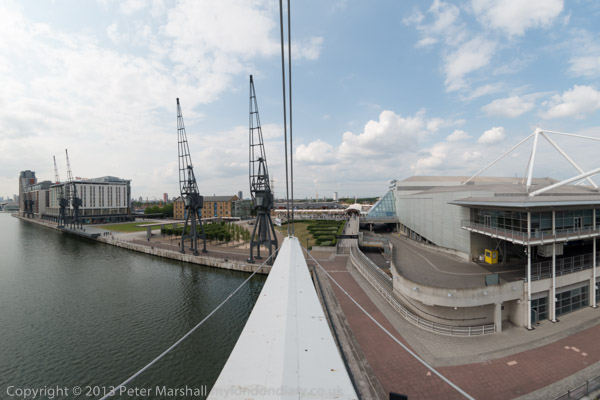
Single fisheye image converted – around 140 degrees horizontal
So far I’ve found two approaches to get good digital panoramics. One which is a little limited on image size, at least with my current equipment is to take a single image with a fisheye lens – such as the 10.5mm DX. This can then be converted with software to a different perspective which retains the wide angle of view and can then be cropped if desired to a panoramic format. The 16Mp DX images on the D800E produce decent images, but an FX fisheye would be a better starting point at 32Mp.
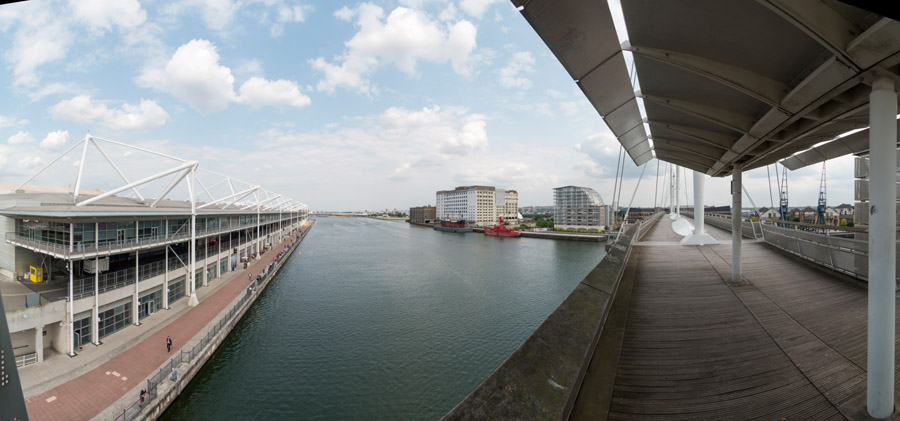
Slightly over 180 degrees from a number of 16mm portrait format images
Or you can stitch several images, either from fisheye or other wide-angle lenses. I tend to use the 16mm in vertical format. You can get good results hand-held, rotating the camera about the nodal point of the lens (near the front on the 16-35) as closely as possible. Its a little easier with the 10.5 fisheye as you need fewer images for a given angle of view and the nodal point is close to the front edge of the body.
Around the Royal Victoria Dock and on Stratford Marsh I made pictures both ways. All are handheld. None of them have been completely optimised and there may be small defects which can usually be ironed out with a little masking of the individual images. PtGui is a really powerful program for getting these things right, though unless you work a lot with panoramas the cost of keeping up with the upgrades many seem just a little steep. A tripod would bea slight help, though to be really useful I think you need a specialised panoramic head set up for the lens you are going to use. You can see more examples from Victoria Dock here – and compare them with non-panoramic images taken at the same time in Victoria Dock and Silvertown.
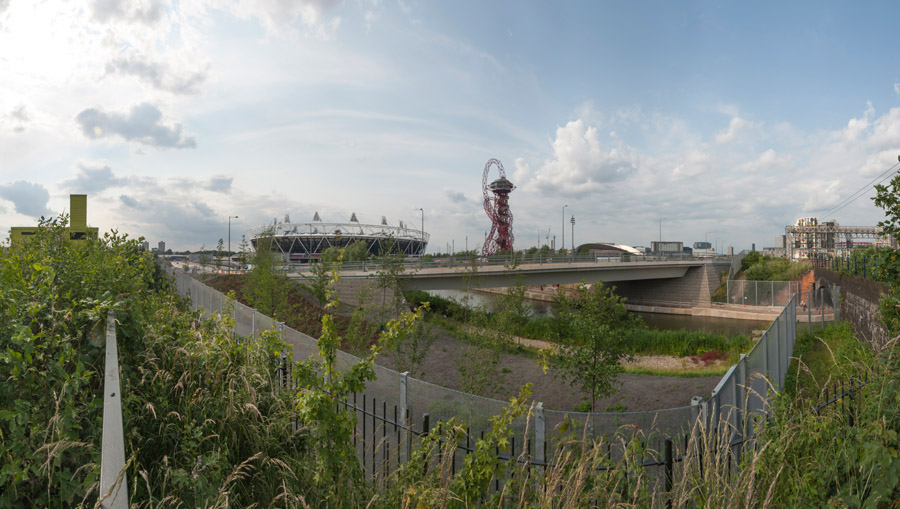
Slightly under 180 degrees from a number of 16mm portrait format images
From the south side of Victoria Dock I walked down to Silvertown West on the DLR and took the train to Stratford High St, walking from there to the View Tube, still open on the Greenway, but it closes at 5pm more or less as I arrived. I wasn’t in time to try and photograph from its viewing gallery, but there were a number of other locations along the Greenway I’d photographed from at intervals from around 1990 on. One or two remained accessible except for a few months around the games when the whole area was locked off, but others are still behind the ugly tall security fence with its razor wire that I rather suspect is going to be one of the permanent Olympic legacies.
When I make a series of images to produce a panorama, it is seldom possible to exactly predict the result, with both horizontal and vertical coverage often not ending exactly as intended. Usually I have a good idea of what I want for the two vertical edges at the side of the image when I take the series of pictures, but you then have to take a little extra at both ends. You need to start and finish with the edge of the eventual picture in the centre of the frame to ensure you have enough of the scene at top and bottom, and if you want a high vertical coverage you need to overlap succeeding images significantly – as much as a half the image width.
There are a few more panoramic images of the Olympic site from the short time I was there on Stratford Greenway Olympic Revisit.
________________________________________________________
My London Diary : Buildings of London : River Lea/Lee Valley : London’s Industrial Heritage
All photographs on this and my other sites, unless otherwise stated are by Peter Marshall and are available for reproduction or can be bought as prints.
To order prints or reproduce images
________________________________________________________
